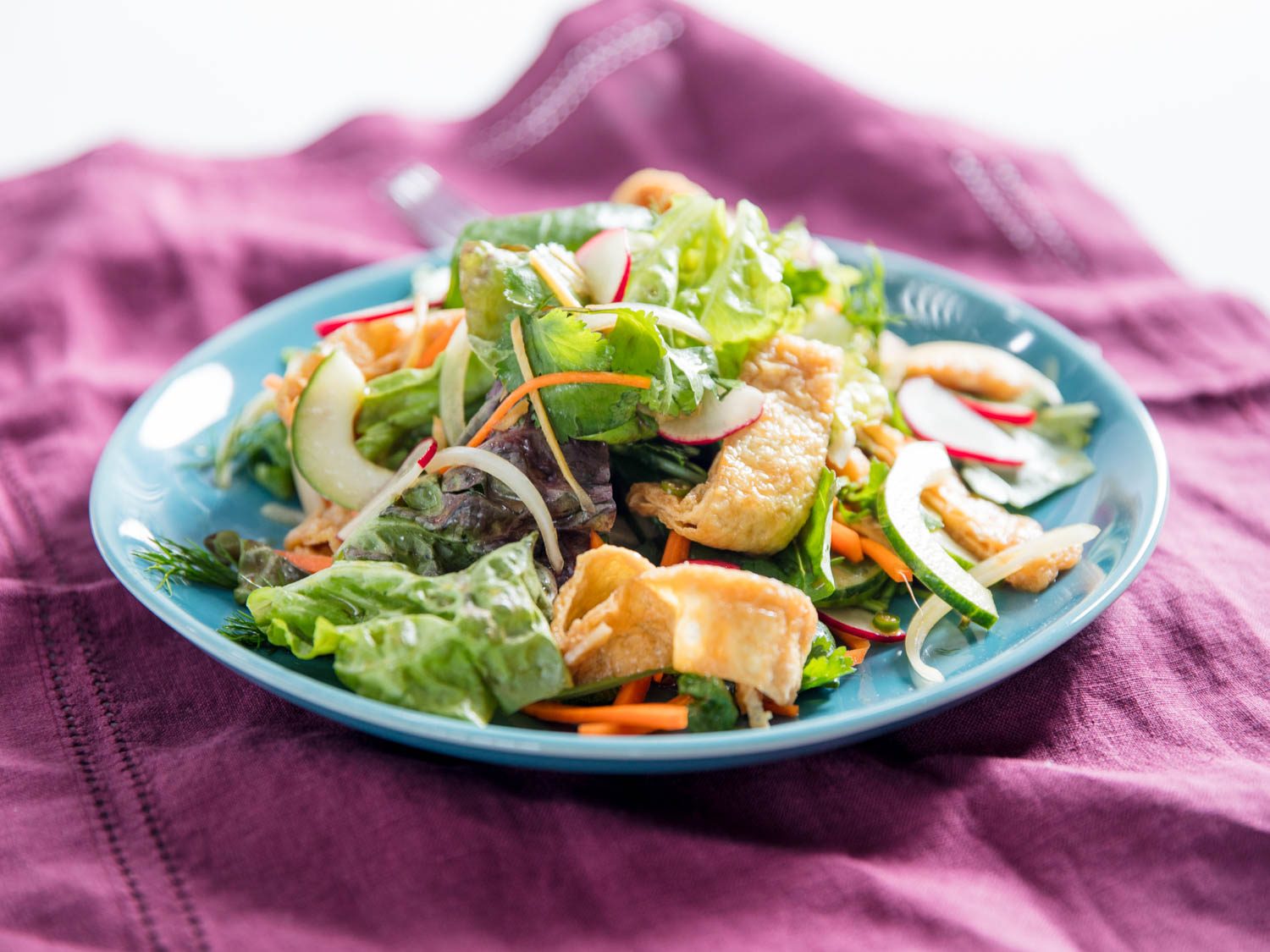
[Photographs: Vicky Wasik]
It can be a lot of pressure to live in a world where pastel smoothies sprinkled with chia seeds smirk at you from every corner of the internet—sometimes it’s almost enough to convince me that my breakfast routine should consist of Instagrammable bowls of super fruits and activated nuts (whatever that means). But the truth is, when I crawl out of bed in the dark of predawn, all I can think about is this salad.
It’s my breakfast most mornings: a mix of light and refreshing herbs and crisp vegetables, with a punch of too much fresh lime juice, a kick in the throat from a fistful of raw ginger and Thai chilies, and a resounding head-butt from an inappropriate amount of raw garlic. Everyone wonders why I don’t drink much coffee, but try getting a beating from this flavorful salad first thing in the morning, and you’ll understand right away.* (For that matter, try it any time of day—it’s great as a light lunch, or paired with sticky rice for a more substantial dinner.)
* Editor‘s note: I don’t care if I’m chugging a bottle of Worcestershire sauce in the morning—I still need coffee, too.
Inspired by yam khai dao, the Northern Thai fried-egg salad I met while working at Pok Pok, my salad can easily be adapted to use whatever is in your fridge. This version is specifically designed with my vegan friends in mind: It swaps fish sauce out for soy, with a pinch of kala namak stepping in for the lost funk. But as long as the dressing has tart, spicy, salty, and sweet elements, you’re welcome to try a host of substitutions. I’ve made it with vinegar or lemon, chili flakes or ají amarillo—even when it’s wrong, it’s still right.
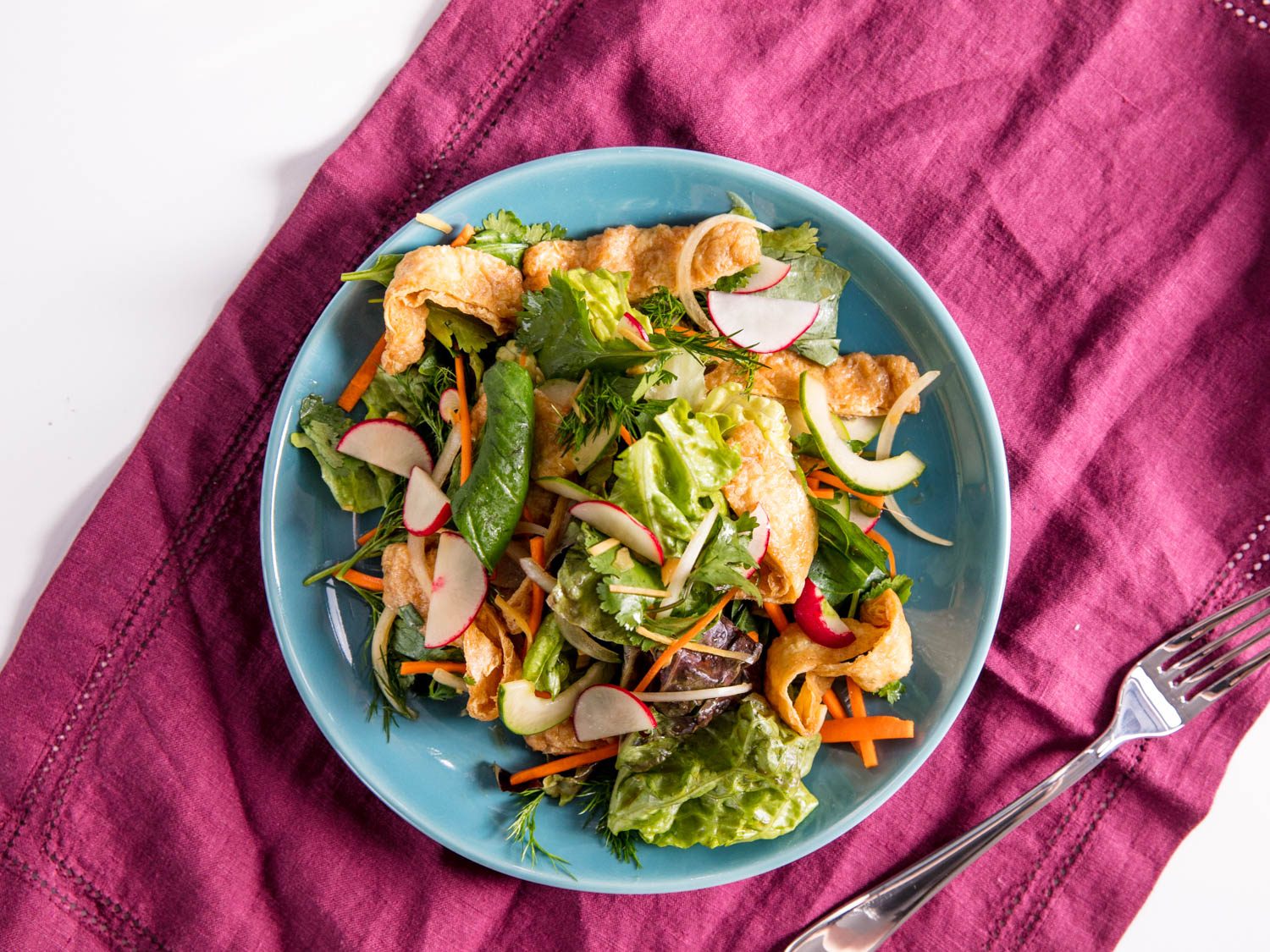
I start by prepping the aburaage. Aburaage are chewy and spongy pouches made by twice-frying slabs of firm tofu. The frying process gives them a dense texture, very similar to that of a hard-cooked omelette. This meatiness, combined with their ability to soak up whatever you marinate them in, makes them perfect for adding to any dish. They’re most often seasoned with soy sauce and sugar (after which they become inari) and stuffed with rice for inarizushi, but aburaage is also great added to curries, ragouts, and even sandwiches or tacos. I always have a few packs lurking in the freezer, and not just for breakfast.
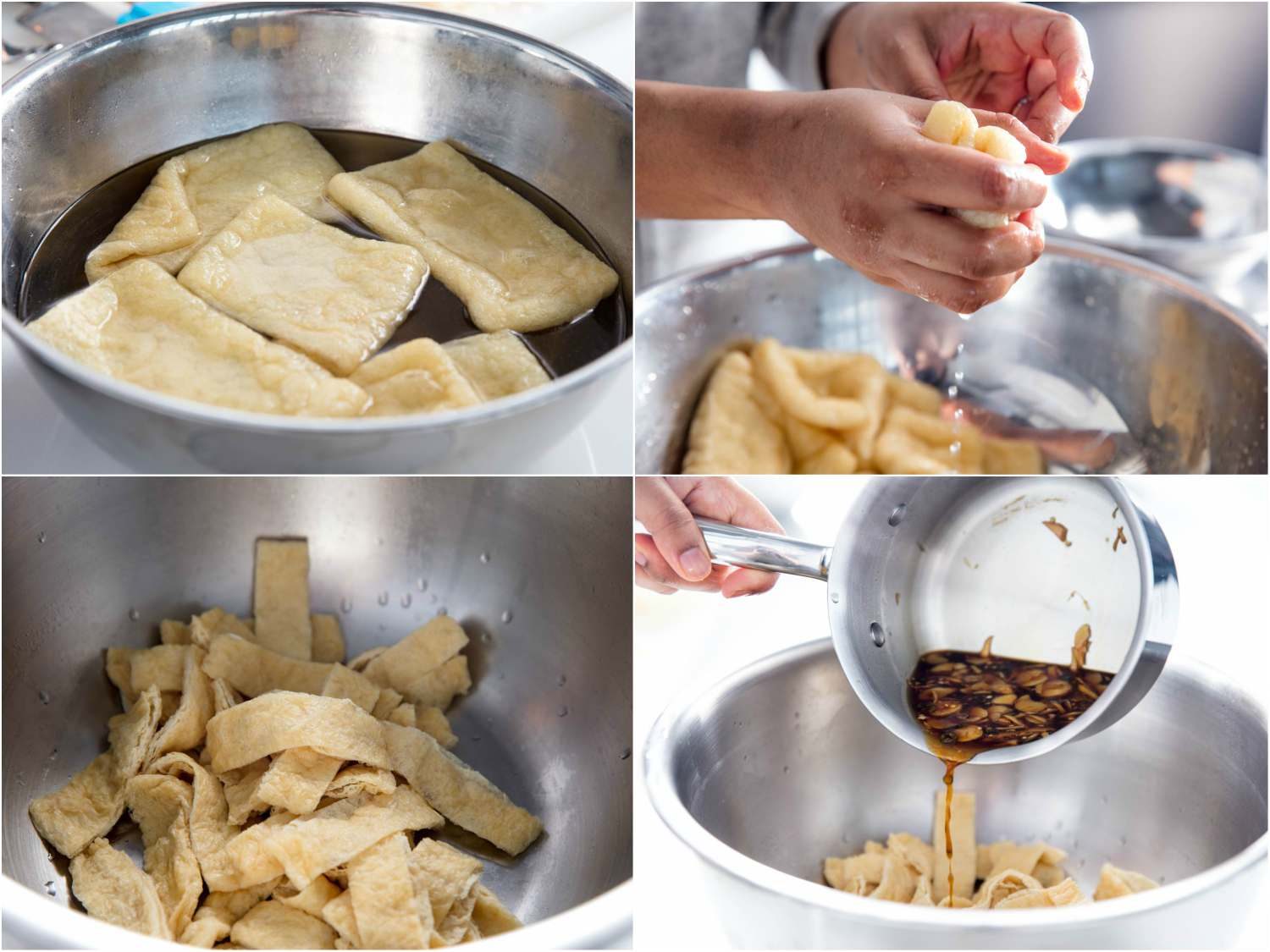
Because it’s fried, it needs to be thoroughly rinsed of any residual oil before use. The best way to do this is to cover the pouches in boiling water and swish them around. If you’re using frozen pouches, you may need to repeat the process to both defrost and rinse them. After draining off the hot water, I rinse them again under running water until they no longer feel greasy—an important step not because we’re worried about our waistlines, but because the oil can often smell rancid. Once they’re rinsed, I squeeze out any extra water before cutting them into strips. I usually prep the aburaage in advance up to this point and store the strips in the refrigerator, so I can easily reach for them in the morning with my half-open, sleepy eyes.
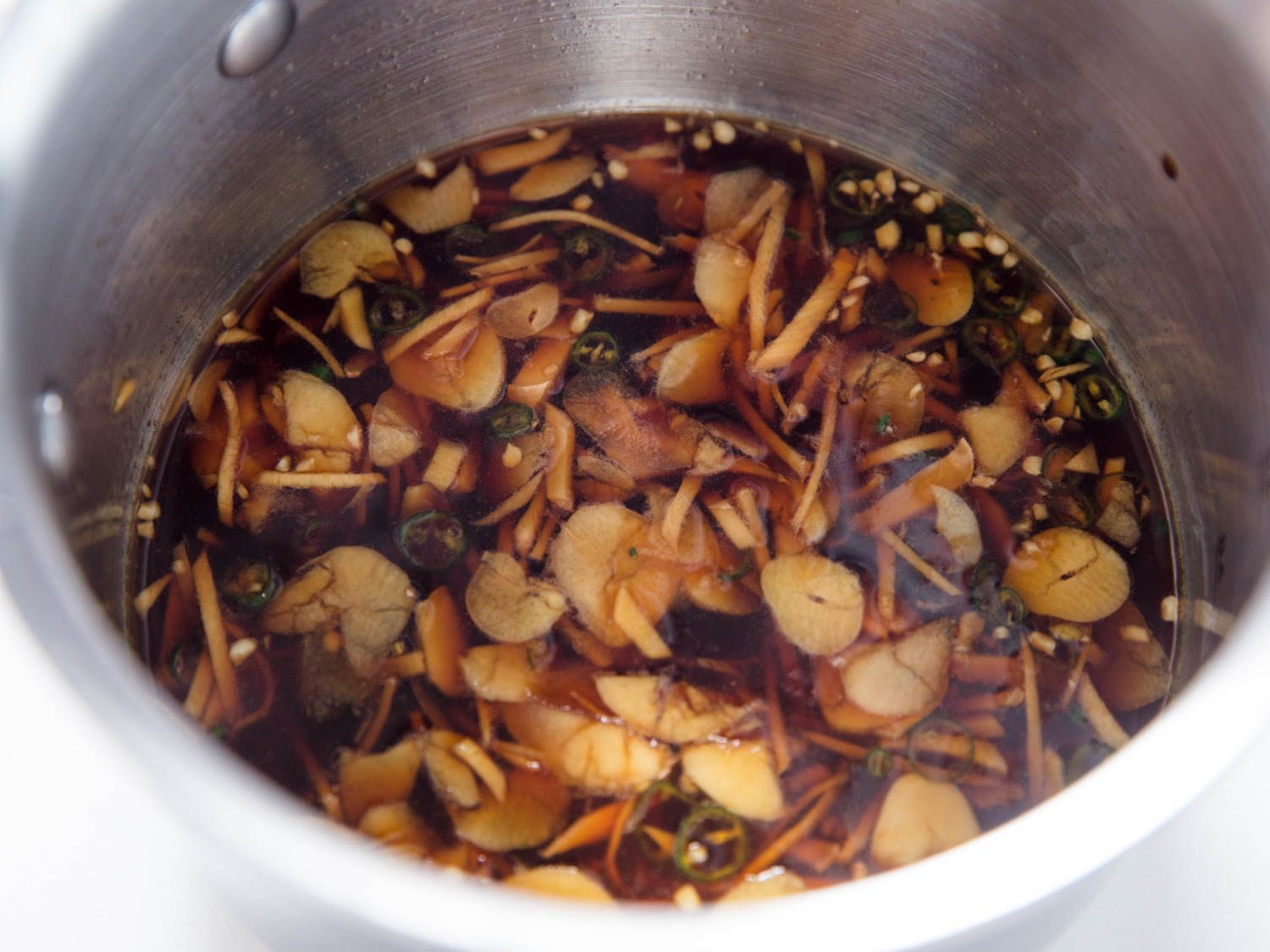
For the dressing, I combine thinly sliced Thai green chili and garlic with fine matchsticks of ginger, soy sauce, fresh lime juice, kala namak, and palm sugar. I warm up this mixture just slightly to melt the sugar and allow the aromatics to bloom. You can do this in a small pot over a burner, or just pop it in the microwave for a quick blast—there’s no need for it to boil or even simmer. Then I pour the dressing over the aburaage strips and let them marinate for a few minutes while I prep the vegetables.

Any combination of crunchy raw vegetables and tender herbs will work in this salad. Here, I’ve combined a julienne of carrots with sliced cucumber, radish, onion, dill, cilantro, basil, and red leaf lettuce. I gently toss the vegetables and herbs with the marinated aburaage and every last drop of the flavorful dressing. The slight warmth of the dressing gently wilts the salad, releasing all the volatile aromas from the herbs. It’s best to eat it right away, while everything is still crisp and you can enjoy the contrast of the cold vegetables against the warm tofu. And I usually eat it right out of the mixing bowl—because, after all that knife work, I just can’t be bothered to do anything else.
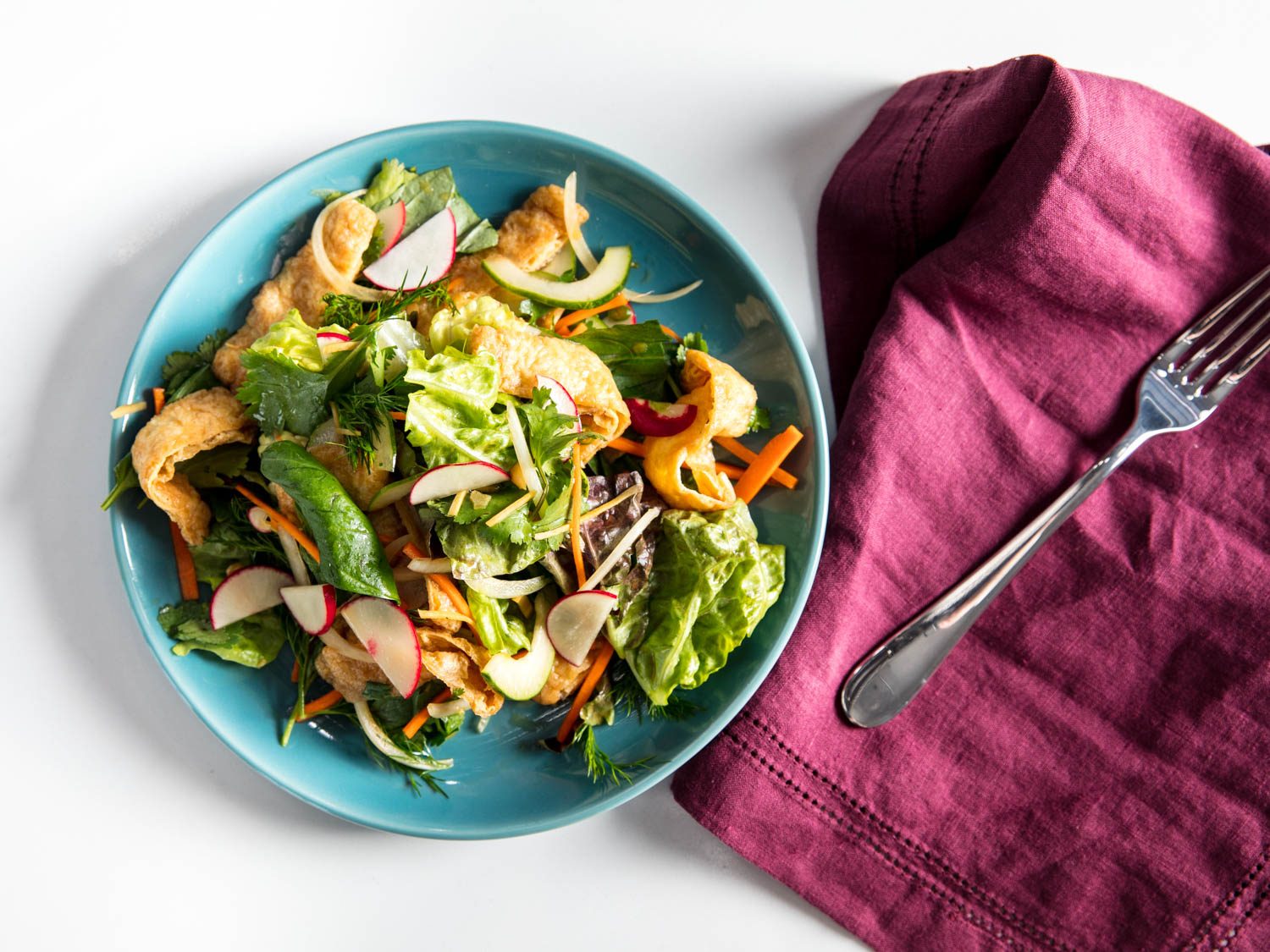
Source link